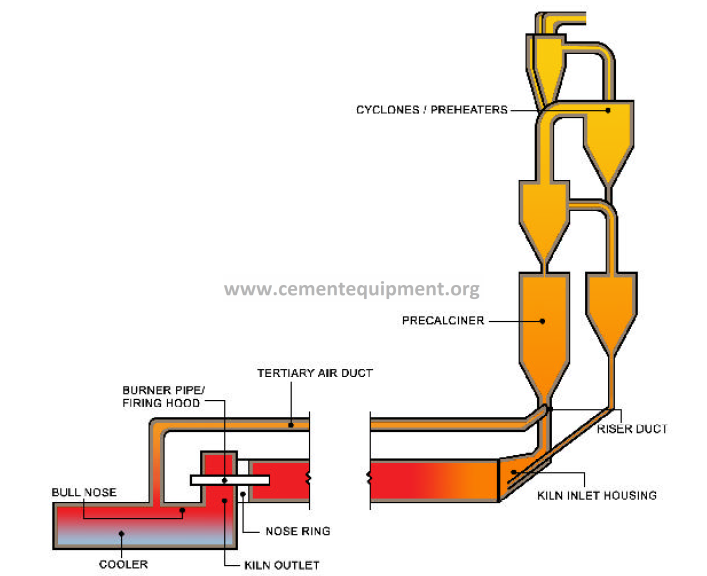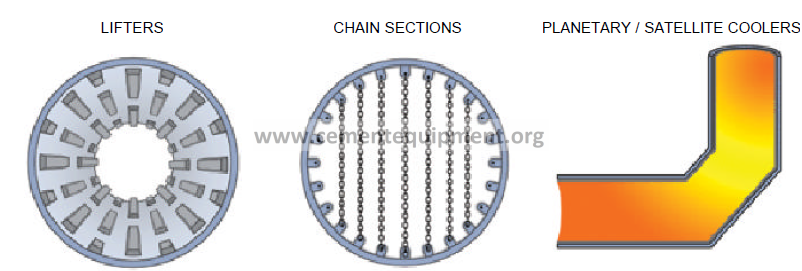Contents
SAVING COSTS IN CEMENT MAKING
A unique range of Stainless Steel Fibres
for Cement Kiln Refractories offering:
-Improved Refractory Performance
-Lower Installation Costs
-Better Operating Efficiency
-Lower Refractory Costs
-Increased Operating Plant Availability

OTHER APPLICATIONS

Burner pipe / Firing hood
Refractory materials used for the external protection of burner pipes experience flexing, high thermal stresses and thermal cycling. The use of fibre
reinforcement increases the bond strength of the refractory preventing crack propagation and extending the refractory life in service. The positive benefits
lead to a reduction in maintenance and material costs.
Recommendation Metalx, ME 446
Cyclones / Preheaters
Erosion from dust particles, thermal shock and thermal cycling are all factors leading to the progressive wear of preheater linings. Steel fibres increase
refractory toughness to improve performance and provide a long-term solution.
Recommendation ME304, ME 430
Precalciner
Both calcined kiln feed and high temperature can cause hot face wear of the precalciner refractory. The addition of fibres helps to strengthen the matrix
and resist these forces which would otherwise cause cracking and spalling, shortening the refractory’s working life.
Recommendation ME 446
Riser Ducts
Riser duct refractory deteriorates due to clinker dust penetration and/or impact from high-pressure water or mechanical cleaning (to remove the build
up of Sulphates). Steel fibre reinforcement lessens refractory damage and lengthens refractory lifetime, saving maintenance and costs.
Recommendation ME 310, ME 446
Tertiary air ducts
Abrasive clinker dust and chemical attack from the gases impact on the refractory which can lead to spalling and the growth of cracks. Fibres, acting
as crack stoppers, prevent the refractory material from breaking up prolonging its service life and reducing repairs.
Recommendation ME 304
Kiln Inlet Housing / Chamber
The kiln inlet by virtue of its shape, exposure to chemical attack from gases demands a high strength refractory. Fibre addition can improve refractory
toughness. The selected steel fibre must be compatible with both temperature and atmosphere
Recommendation ME 310, ME 446, Metalx
NoseRings
Flexing and thermal shock place particular demands on nose ring refractory. Fibre reinforcement improves flexural strength and reduces cracking
avoiding the need for frequent, costly repairs.
Recommendation: ME 310, Metalx
Lifters
Both high temperature and mechanical damage cause rapid refractory wear in the lifter zone. The addition of fibres increases refractory toughness
which leads to improved performance ensuring maximum refractory reliability.
Recommendation ME 310, Metalx
Chain sections
Although wet kilns operate at lower temperatures in this area the refractory lining in the chain section is subjected to severe abrasion from the chains
sliding down the side of the kiln. The use of fibre reinforcement strengthens the refractory and considerably improves resistance to mechanical abuse.
Recommendation ME 304
Kiln Outlet
The kiln outlet, positioned inside the kiln hood reaches 1200/1400°c and needs to have good thermal shock and cycling resistance. Fibres ensure
the refractory can withstand such conditions, preventing the growth of macro-cracks and delaying failure.
Recommendation Metalx
Cooler Throat / Cooler
Modern grate coolers are subject to impact from clinker and suffer thermal shock where hot clinker is quenched by high velocities of cool air. Steel
fibres have been used to strengthen cooler throats, sidewalls and roofs resulting in extended service times and more predictable refractory performance.
Recommendation ME 310
Bull Nose:
Intense clinker dust abrasion and thermal shock/cycling cause detoriation of the bull nose refractory. Fibre reinforced blocks minimse damage and
extend service lifetime.
Recommendation ME 304, ME 310
Planetary / Satellite Coolers
The impact of falling clinker causes severe abrasion in cooler elbows. A fibre reinforced refractory last considerably longer to give significant economies
in production and maintenance costs.
Recommendation ME 310, ME 446